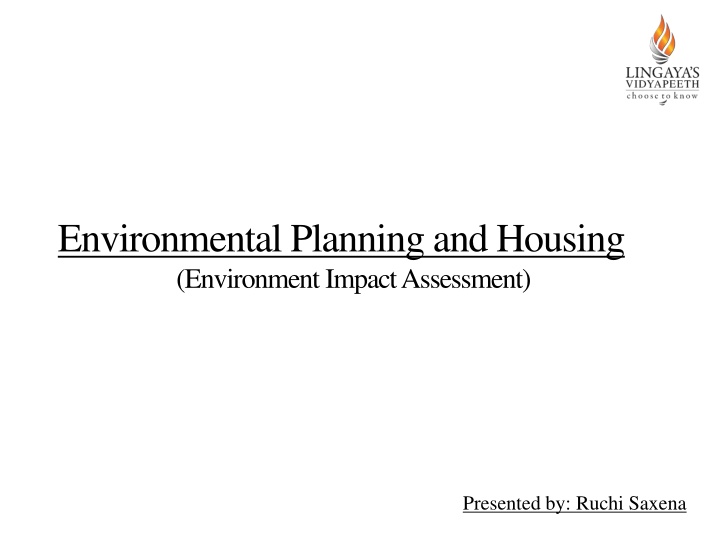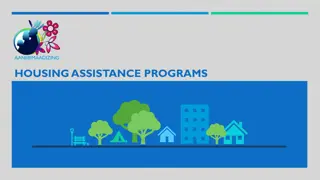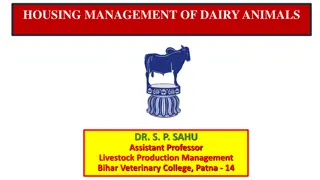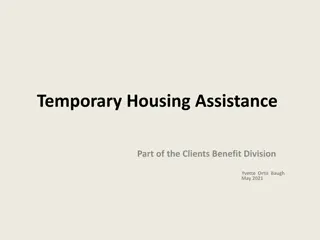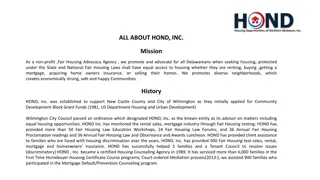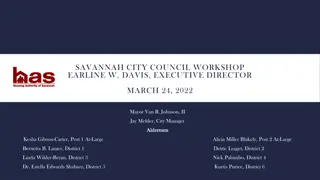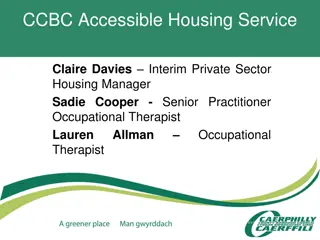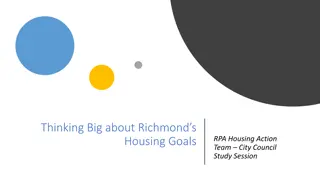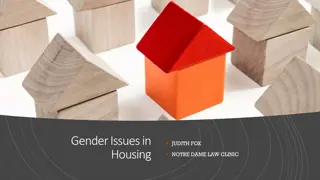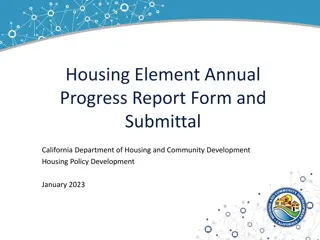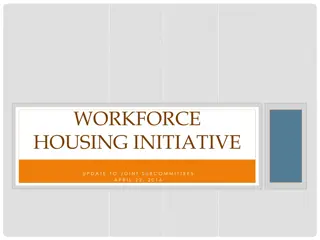Environmental Planning and Housing in India
Exploring the Environmental Impact Assessment (EIA) process in India under the Environment Protection Act. Learn about the types of impacts, requirements for prior environmental clearance, categorization of projects, and stages in the EIA process.
Download Presentation

Please find below an Image/Link to download the presentation.
The content on the website is provided AS IS for your information and personal use only. It may not be sold, licensed, or shared on other websites without obtaining consent from the author.If you encounter any issues during the download, it is possible that the publisher has removed the file from their server.
You are allowed to download the files provided on this website for personal or commercial use, subject to the condition that they are used lawfully. All files are the property of their respective owners.
The content on the website is provided AS IS for your information and personal use only. It may not be sold, licensed, or shared on other websites without obtaining consent from the author.
E N D
Presentation Transcript
Environmental Planning and Housing (Environment Impact Assessment) Presented by: Ruchi Saxena
Types of Impacts Biological and Physio-Chemical Impacts- Vegetation, wildlife, air, water, soil Social Demographic, Cultural, Gender, Institutional Health Economic- Livelihood, skill requirements
EIA Process in India Under Environment Protection Act; EIA Notification issued in 1994 Amended from time to time. Latest in 2006, amended in 2016. Focus should be on EIA being a management tool for sound planning and not for getting environmental clearance
Requirement of Prior Environmental Clearance All projects have been categorised in eight categories All projects listed in the schedule to this notification require environmental clearance Expansion and modernization of existing projects require environmental clearance Any Change in product mix in existing manufacturing unit
Categorisation of Projects and Activities Category A and B (B1 and B2) Based on spatial extent of potential impact, potential impact on human health and natural and man made resources. Category A: Clearance from Central Govt.; MoEF on recommendations from Expert Appraisal Committee Category B1: Clearance from State Environment Impact Assessment Authority (SEIAA). In the absence of SEIAA, Project treated as Category A project Category B2: No Clearance required.
Stages in Prior EC Process Screening Only for Category B Projects Scoping Public Consultation Appraisal
Scoping Refers to the process for determining detailed and comprehensive ToR addressing all relevant environmental concerns for preparation of EIA report EAC/SEAC decide on the ToR ToR decided on the basis of information by applicant (Form 1/1A), site visit by EAC/SEAC expert (if considered necessary) Category B projects of Township/Housing/commercial complex not require scoping. ToR for EIA to be informed to the applicant within 60 days. ToR valid for two years for submission of EIA/EMP. Extended to three years after justification. Primary data should not be older than three years
Public Consultation All A and B1 category projects need to undertake Public Consultation. Public Consultation not required for the following : Modernisation of irrigation projects Projects within industrial parks Expansion of roads and highways without further acquisition of land Townships/ Area Development Projects Projects concerning National Defence Public Consultation through public hearing and written responses from stakeholders (Summary EIA report on website) Final EIA and EMP to address all concerns out of PC
Appraisal Detailed Scrutiny of Final EIA Report by EAC/SEAC Applicant representative invited for clarifications EAC/SEAC recommends Environmental clearance or rejects with reasons to the Regulatory Authority Appraisal to be completed within 60 days of receiving final EIA report Grant or Rejection Regulatory Authority considers the recommendations of EAC/SEAC To be granted/rejected within 45 days of receipt of recommendations
